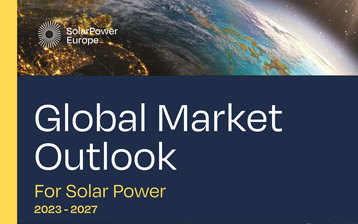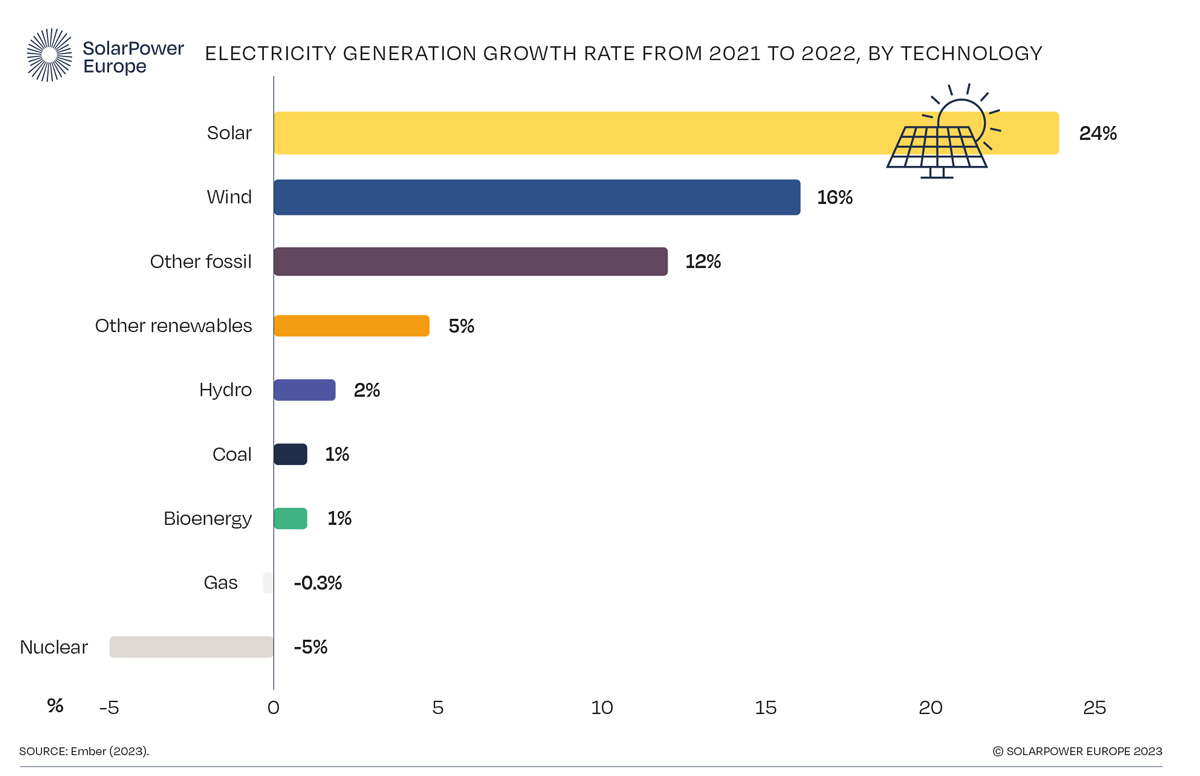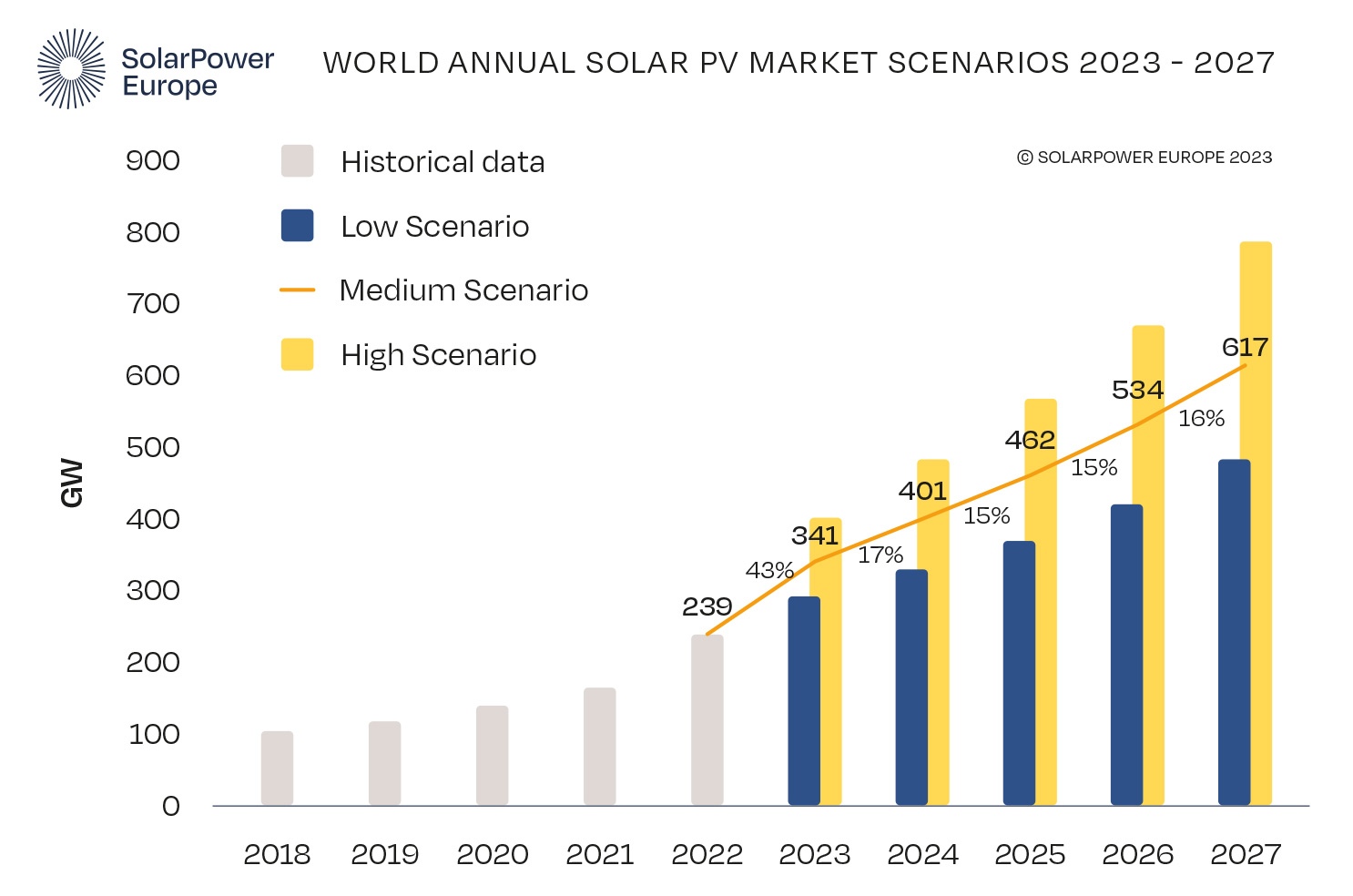We present below an extract from the recently published annual Global Market Outlook for Solar Power 2023-2027 report, which presents past and current results on 26 countries that have reached at least 1 GW of solar energy installed in 2022, and medium- and long-term future perspective for the renewable energy sector.
Positive results have been registered in 2023 in the solar market: +43% growth of photovoltaic energy systems installed compared to 2022. The number of Countries with at least 1 GW installations is in fact increased from 17 Countries in 2021 to 26 in 2022.
The number of Countries is expected to grow over 50 in 2025.
These results would bring the total operational capacities to exceed 2 TW at the beginning of 2025 and 3.5 TW at the end of 2027.
The Report predicts approximately 402 GW of new solar installations in 2023 and almost 800 GW by 2027 with the potential for an annual TW-scale market by 2030.
Solar photovoltaic is the most installed technology in 2022
Considering the full range of renewable technologies, the solar photovoltaic sector in 2022 accounted to two thirds of the overall installations of energy capacity, with a growing rate of 24% of electricity production compared to other types of renewable energy.
Even though there are improvements in the PV energy production, the solar technology can produce nowadays only 4,5% of the global electricity demand, and over 70% of the energy comes from fossil or non-renewable sources.
The advantage of the solar energy remains the price, as it is significantly cheaper than fossil and nuclear energies. In Europe, this element is of a major importance and has led to an increment of photovoltaic annual installations especially in the Netherlands where the installations of Watt per capita is 1,029 W/per capita, Germany 815 W/per capita and Denmark 713W/capita.
Overall, in 2022 European Countries have achieved a growing rate of 44% having installed 14.1 GW, arriving to a total installed capacity of 46.1 GW, achieving a level of 19% of the global market.
European market prospects 2023 – 2027
From a broader perspective, the war in Ukraine has unleashed inflationary pressures around the world, and the global economy is still facing important repercussions from the energy crisis.
The Euro area entered 2023 with inflation rates above 8%, and it was up to 7% in April 2023. The IMF expects inflation to decline more slowly in the future and is unlikely to return to the target level before 2025.
The European solar market is in any case ready for growth, driven by legislative initiatives and state incentives for energy transition plans with the aim to achieve more independence from Russian gas.
Europe’s growth will rely on the European Union’s efforts to improve its renewable targets for 2030, including through the REPowerEU plan.
The global supply chain is improving, in fact giant PV manufacturing facilities have been built and the increment of availabilities of products as a result have brought to a reduction of prices in recent months and are expected to fall further.
Global PV capacity forecast 2024 – 2027
Milestones for global installed PV generation capacity over the next five years are projected as follows:
- 1.5 TW in 2023,
- 1.9 TW in 2024,
- 2.4 TW in 2025,
- 2.9 TW in 2026,
- 3.5 TW in 2027
Market segments 2023 – 2027: C&I, Utility, Residential
The growing amount of PV installation demonstrates the interest of increasing self-consumption and independence from the grid, from both residential and commercial sector.
The residential sector has been registered as the largest segment of the market followed by C&I and utility systems. In particular, the installations of utility scale plans are growing slowly and still need a boost from the legislation. Starting from 2024 the utility scale segment is expected to increase and to achieve + 57% in 2027.
The forecast for the residential segment is an installation of annual capacity of 183 GW in 2024 and up to 268 GW in 2027.
The introduction of new energy efficiency obligations in several countries will be a new input to the photovoltaic market and as well heating sector, with new regulations to facilitate the global decarbonisation process.








